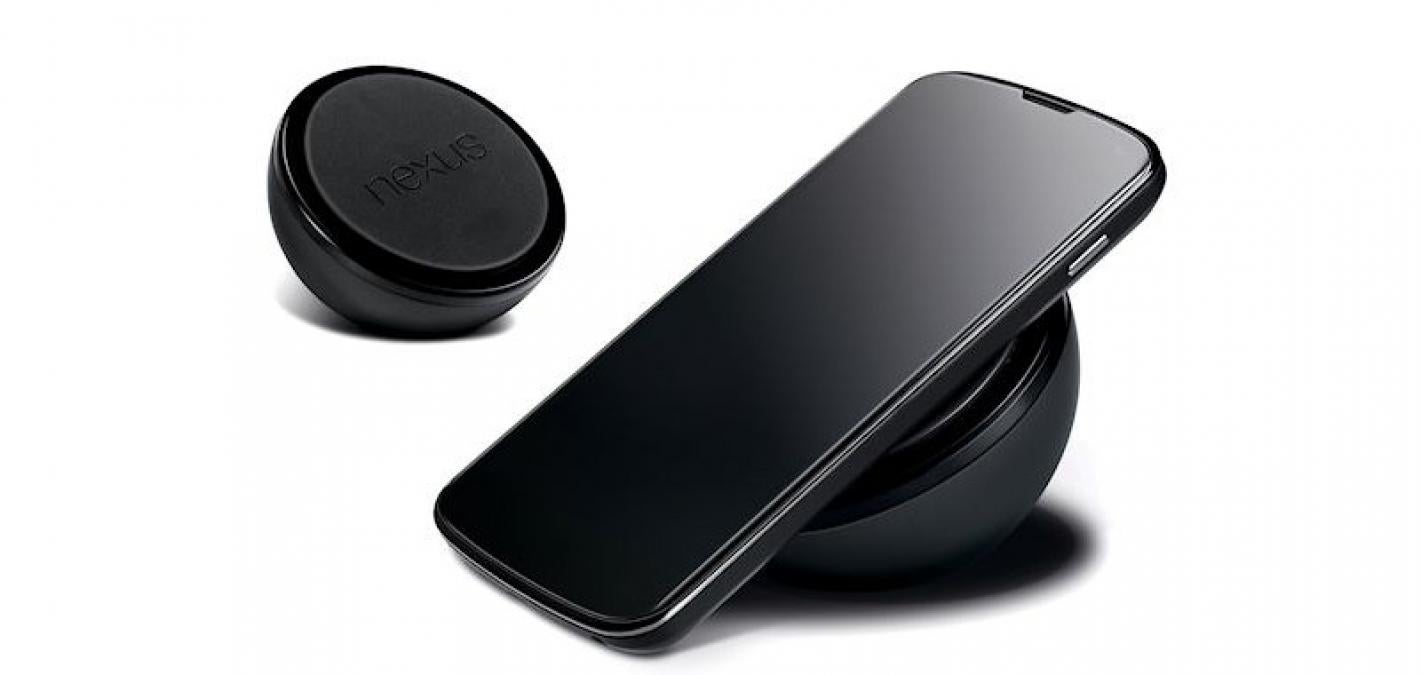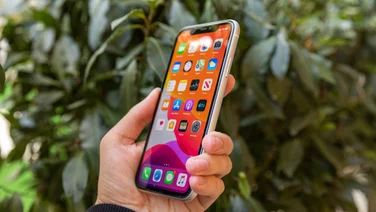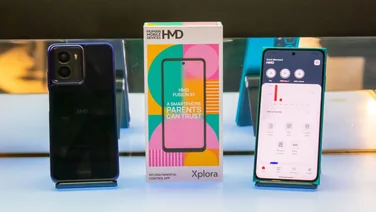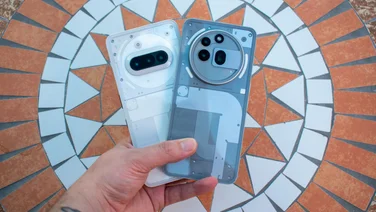To help us provide you with free impartial advice, we may earn a commission if you buy through links on our site. Learn more








When the Google Nexus 4 first launched it was a revelation. It had great performance and a SIM-free price that was easy on the wallet. However, two years on it’s now showing its age. You’re only going to find it second hand or refurbished now, but if you’re lucky you can find it for as low as £120. At this price, though, there are other great choices available such as the excellent value Motorola Moto G.
The Nexus 4 received an update to the latest version of Android, which is usually great news, but it’s actually highlighted the device’s dated specifications, with it struggling to run Android Lollipop. The Android update also introduced a number of bugs such as call issues that haven’t been fixed, making updating to Lollipop less enticing.

Previous Nexus smartphones were manufactured by HTC and Samsung (twice), but Google likes to share things around and so this handset is made by LG. Now LG’s handsets haven’t wowed us to the extent of those two brands of late, although the LG Optimus 4X HD provided plenty of bang for the buck.
The Nexus 4 is a pretty bland handset at first glance, with none of the opinion-splitting design cues from the LG’s Prada range, which have since spread to some other models. The front is practically featureless, thanks to the use of software buttons on the display itself. The screen has nicely curved edges too, so it fits almost seamlessly into the rest of the body.
Turn it sideways and it’s slender, but not stick-thin, at 9.1mm. That said it’s very comfortable to hold thanks to its sloped-off edges (they’re too curved to be called bevelled), the power button is easy to find with either hand.

The showpiece is on the rear of the handset, where the backplate is formed of hundreds of little glittery pixels beneath the surface, and beneath the Nexus and LG logos. They catch the light and the pattern changes as you twist the phone. It’s a nice effect but can’t make up for the fact that this phone is made up from a number of plastic elements rather than having a sleek polycarbonate or metal unibody.

The handset is a single sealed unit, which makes it feel more sturdy than the Samsung Galaxy S3 with its removable backplate. There’s no access to the battery and no memory card slot provided. The latter may be an issue for a minority of media hoarders, as only 8GB and 16GB storage options are available.

The micro USB port also doubles up as a display output, though surprisingly it doesn’t use the MHL standard that we’ve seen on numerous recent devices, such as the Samsung Galaxy S3. Instead it supports the new SlimPort standard, which is based upon DisplayPort.
AS with MHL, you can use an adaptor to connect the port to a DVI or VGA display. In practice we couldn’t find any such adaptors for sale yet in the UK, and the only adaptors in the US are HDMI ones, which cost a whopping $29 (around £18). Like MHL, SlimPort will also charge your phone (depending on the adaptor used). Frankly we can’t really see the benefit to consumers of another standard, given that MHL-to-HDMI is fine for the vast majority of people’s needs and cables are widely available from around £6.
Speaking of accessories that aren’t yet available to buy, the Wireless Charging Orb looks to be an essential bit of kit for Nexus 4 owners. Built-in magnets hold the handset and orb together, with the soft-touch plastic surface of the orb providing a scratch-free base.
It’s gone on sale in the US for $60, but it’s not available in the UK. Visiting the official Nexus 4 Wireless Charger page currently displays a message that the “Nexus 4 Wireless Charger is not available in your country”.
Given that this accessory was already very delayed in the US and that the phone has suffered from stock shortages, it’s looking less and less as though it will make it to these shores. It’s a shame, as the convenience of being able to plonk your phone on a charger and leave it on your desk should be underestimated

Inside the Nexus 4 is a 2,100mAh battery, the same size as that in the Samsung Galaxy S3. This managed a very respectable eight and-a-half hours in our continuous video playback test. It’s a better score than most smartphones we’ve seen, but almost an hour and-a-half short of the Samsung Galaxy S3 – probably due to that handset’s power efficient AMOLED display.
The Nexus 4 also supports NFC for easy wireless data transfer. At present that’s limited to Android Beam, allowing you to share pictures, apps and contact details by simply tapping two such handsets together. It’s the sort of hassle-free technology that will be great once everyone has it in their phones, but it’s currently a bit of a gimmick. With NFC comes support for tap-and-pay services, such as Google Wallet, although it’s not yet available in the UK.
With its resolution of 1,280×768 the Google Nexus 4 has a detailed display, with almost a million pixels. When we originally reviewed the phone, there was only one other handset that could match it – the Nokia Lumia 920. The 4.7in display gives a PPI figure of 320, just shy of the 326PPI on the iPhone 5 and its ‘Retina Display’, although that smaller display has ‘only’ 727,040 pixels.
Pixels aren’t everything and the iPhone 5 isn’t the Nexus 4’s most obvious competitor. Comparing it to the current reigning Android phone, the Samsung Galaxy S3, we found that the Nexus 4’s screen was sharper when it came to text and fine detail, but the Samsung’s AMOLED panel was far more vibrant and had better contrast, though whites always looks a little off-colour with a slight yellow-grey colour cast. This is pretty typical of IPS vs AMOLED comparisons, but even when compared to the likes of the HTC One X, also an IPS smartphone, the Nexus 4’s display still looked a touch drab.

Since the phone was launched, the next generation of Android phones have been released or announced, all with Full HD 1,920×1,080 resolutions, giving them much sharper displays and higher pixel densities. These include the Samsung Galaxy S4, the HTC One and the Sony Xperia Z. That said, there’s nothing wrong with Nexus 4’s display and there’s still plenty of resolution for web browsing.
Although the 4.7in display only sounds marginally smaller than the S3’s 4.8in display, the Nexus 4 has the three usual Android buttons positioned onscreen, rather than below it. Google seems to prefer such virtual buttons, with all its own-brand devices using them. It’s nice to have buttons that switch into landscape when desired, but they do take up part of the screen when browsing the net.
On the plus side the Nexus 4 is slightly shorter and thinner than the S3, as it doesn’t have to accommodate any buttons below the screen after all. However, it’s fractionally thicker at 9.1mm to 8.6mm. None of these differences make much odds in the hand or the pocket, and every button and port on the edges of the phones is positioned practically identically.
In day-to-day use the Google Nexus 4 is screamingly fast. Apps snap open and shut, the home screen and Google Maps glide along under your finger like they’ve been Teflon-coated. The only minor complaint is that pinching-to-zoom on the browser seems to have small delay before the phone starts to respond. Now, some of this is due to Android 4.2 (more on that below) but having seen that OS running on the Nexus 7 as well, a lot of the credit has to be laid at the feet of the Nexus 4 itself.
Inside is a Qualcomm APQ8064 Snapdragon chipset, with 2GB of RAM and four Krait cores running at 1.5GHz. These cores are similar in design to ARM’s A15 core, and more advanced in a number of ways than say the A9 cores used in Tegra 3 or in the Samsung Galaxy S3’s Exynos chipset.

Given our user experience, and the hardware specifications, we were surprised to find that many of the popular benchmarks didn’t back up our own impressions. A SunSpider Javascript score of 1,878ms in the provided Chrome browser, is surprisingly slow considering the modern chipset in use; while a Qudrant score of 4,815 is respectable, it’s not an S3 beater. It was only in graphics department it really shone, powering through the GLBench Egypt HD benchmark with 39fps.
All of this really goes to show that benchmarks can’t always be trusted. The browsing experience isn’t the fastest we’ve seen admittedly, but for the vast majority of tasks, and for switching between tasks, the Nexus 4 flies.The camera on the Google Nexus 4 takes eight-megapixel images, like most top-end smartphones. We compared its image quality against the S3, and found both took similar-looking pictures when resized to a large PC monitor. Zooming into the finer detail, we preferred the Nexus over the S3, things are just a little crisper.


Image quality is important but we were put off the Nexus 4 somewhat by the camera’s controls. These strive to be ultra-minimal, but we’d rather just have more obvious menus, and some more options. Burst mode is conspicuous by its absence, you can take photos pretty quick by tapping the screen repeatedly, but there’s nothing to match the hold and fire 3.3fps mode of the S3.

One new trick here is the Photo Sphere mode, which lets you stitch numerous photos together into panoramas or even full 360 degree views. It uses the handset’s gyroscope and onscreen prompts to help you line up all the photos correctly, and it works pretty well as long as your subject is at a distance and doesn’t contain numerous strong vertical and horizontal lines. It’s great fun and the first time we’ve seen something like this on an Android phone, being very similar to Microsoft’s Photosynth for Windows Phone and iOS.


Whether you’re taking quick snapshots or stitching complex panoramas, the Nexus 4 will upload your pictures to Google+ via the app’s Instant Upload feature. All your photos are stored there, and also accessible via Picasa Web Albums. There’s no storage limit for this service, however photos are resized to 2,048 pixels along their longest edge (down from 3,264 pixels on the Nexus 4).

This service is available on practically any Android smartphone, but we mention it here to contrast it with competing offerings. The Samsung Galaxy S3 and HTC One offer 50GB and 25GB of free Dropbox storage respectively. Using this you can sync pics at the full resolution, and anything else you want from other devices. This offer only lasts for two years, then you’ll have to start paying to continue using the service or buy another device with a similar offer.
One of the big draws of the Google Nexus 4 is that it comes with a vanilla version of Android, so there’s just what Google intended and no swathes of additional apps you’ll never use, and stores you’ll never buy anything from. The Nexus 4 now runs Android 4.4 KitKat, which brings a host of new features and capabilities with it, most notably the integration of SMS messaging with the Google Hangouts chat service.

For some, the merging of SMS and Hangouts is a genius piece of integration that makes it easy to track your conversations seamlessly. For others it’s an irritation that can lead to potentially embarrassing faux pas if you accidentally contact someone from the wrong account. Keep in mind that if you don’t take to it, you can always download an alternative SMS app from the Play Store.
The main Hangouts screen shows you a list of messages you’ve received either via text or chat, along with the name and – if available – picture of the sender. When you create a new message or hangout, you’ll be presented with a list of your contacts and, at the top, a text entry field, where you can address your message to anyone in your contacts list or who has a public G+ account.
KitKat also brings with it interface updates with unlimited home screens, a dedicated screen for Google Now at the far left and improved support for printing both via Google Cloud Print and using the Google Beam NFC feature with compatible printers.There’s little wrong with LG’s take on the Nexus brand, in fact it’s a great smartphone and one we’d be happy to own. Android 4.2 is a big plus point, there are some neat new features, and you don’t have to fight with a manufacturer’s take on Android. Despite this we still narrowly prefer the Samsung Galaxy S3 for its more-vibrant screen and longer battery life. If you want a newer phone, the HTC One is currently our pick of the bunch, although that may change once we’ve reviewed the Samsung Galaxy S4. Still, if you’re looking to stand out from the crowd, or can’t stand Samsung’s take on Android, then the Nexus 4 is a great choice.
The Nexus 4 is increasingly tricky to find and is now only available refurbished or second hand. Prices range from £120 up to £250 so it is worth shopping around. The update to Android Lollipop had a negative impact on the Nexus 4’s performance and introduced a number of bugs, which is disappointing. The new Moto G is only £145 and is a far more up to date handset, while the Nexus 6 is now available for those keen on a vanilla Nexus handset. The Nexus 4 was a great handset, but nowadays your money is probably best spent elsewhere.




